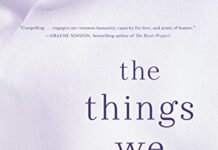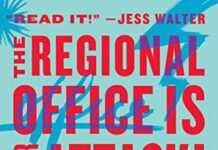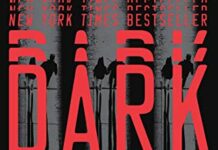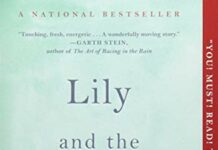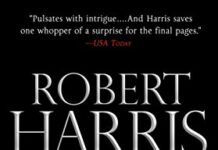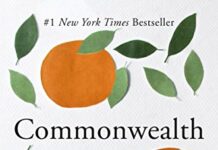
Ebook Info
- Published: 2016
- Number of pages:
- Format: Epub
- File Size: 0.66 MB
- Authors: Selina Siak Chin Yoke
Description
Facing challenges in an increasingly colonial world, Chye Hoon, a rebellious young girl, must learn to embrace her mixed Malayan-Chinese identity as a Nyonya—and her destiny as a cook, rather than following her first dream of attending school like her brother.
Amidst the smells of chillies and garlic frying, Chye Hoon begins to appreciate the richness of her traditions, eventually marrying Wong Peng Choon, a Chinese man. Together, they have ten children. At last, she can pass on the stories she has heard—magical tales of men from the sea—and her warrior’s courage, along with her wonderful kueh (cakes).
But the cultural shift towards the West has begun. Chye Hoon finds herself afraid of losing the heritage she so prizes as her children move more and more into the modernising Western world.
User’s Reviews
Of Malaysian-Chinese heritage, Selina Siak Chin Yoke grew up listening to family stories and ancient legends, always knowing that one day she would write. After an eclectic life as a theoretical physicist, investment banker and trader in London, the heavens intervened. In 2009, Chin Yoke was diagnosed with cancer, the second major illness she had to battle. While recovering, she decided not to delay her dream of writing any longer. She is currently working on her second book and also writes a blog about Malaysia at www.chinyoke.wordpress.com.
Reviews from Amazon users, collected at the time the book is getting published on UniedVRG. It can be related to shiping or paper quality instead of the book content:
⭐ I am delighted that I chose this novel. I wanted a unique vision of the world and I got it. As a child I loved Pearl S.Buck’s “The Good Earth” so I was open to exploring, in print, a different culture than my own. The main character, a young mixed culture (Chinese and Malayan) girl born in the time of the Tiger, is a worthy heroine. The story is set in the colonial period and we see a people and a culture struggle to maintain ancestral ties. I was worried that language and idioms of the time period would trip me up while reading, however, I adjusted easily thanks to a concise introduction by the author. The writing is lyrical but not flowery. I was transported to the time and place through the eyes of this feisty girl. I will give you a glimpse into the writer’s skill. At the end of chapter one we can feel the promise of the rest of the novel “I can still picture the bright moon visible through the open air well, hear the clack-clacking of lizards scuttling about dark walls. In the rooms beyond chattering voices reverberated, while around me, stacked neatly on the floor and on wooden cabinets, were the utensils that would one day be my weapons.”Buy this book and I believe you will enjoy this as much as I have
⭐ I’m Malaysian Chinese and I grew up in Ipoh, where much of this novel was set. I enjoyed exploring in my mind the places the author described and my mouth salivated imagining the food which permeated throughout the book.I also enjoyed the plot and characters greatly but what grated on me throughout the book and inevitably caused me to only rate this 3 stars is, the way the dialogue was written. The characters are supposed to be speaking in their native Chinese dialects or the local language of Malay, yet the author presented the dialogue in broken English. This is perplexing and didn’t work at all in the context of which the book is supposed to be read. The overall narration is in excellent English in what one perceives is the main character’s mother tongue, yet when actually speaking, it’s in poor English?Other than that one thing, I did enjoy the book. Perhaps a second revision of this novel correcting the broken English in its dialogues should be considered.
⭐ I really wanted to like this book. My father is from Malaysia and is Chinese — my family heritage made this book even more appealing and was interesting to learn some history of my father’s homeland. I’ve also spent an abundant amount of time in Malaysia.And actually, there’s much about this book that I appreciated, like the descriptions of the town, the atmosphere, the food. I love period books because it’s like a glimpse into the past and learning the history of a place. The author does a fairly good job of bringing the characters to life and telling a relevant story.The one thing I couldn’t get over though, was the dialogue. It literally ruined the book for me.From the very beginning, the main character, Chye Hoon, speaks in this broken English. But the thing is, she’s not actually supposed to be speaking in English at all. It’s translated dialogue. But WHY is it so broken?? Why is almost everyone’s dialogue translated in broken English? Having spent time in Malaysia, I could hear the accents of the characters in my head and yes, that’s how they would have sounded if they’d been speaking in broken English. But these characters aren’t supposed to be speaking English. They’re supposed to be speaking in their native tongues — whether it’s Chinese, Hokkien, or Malay. And those languages themselves are not just broken, choppy, unstructured languages. To translate them as such does a horrendous disservice to them.Reading it as such turns the characters into some sort of crude, unevolved beings. It’s infuriating because these characters are supposed to be smart and rich in culture… so why make them sound like they’re ignorant all throughout?? For the bulk of the book, they’re not ESL students. We are assuming they’re speaking in their native tongues. Why are the languages being portrayed so poorly?Also, the author’s picking and choosing of when to translate and when not to translate and when to explain and when not to explain translations and meanings, is confusing. There’s lines in the book that are direct translations of Chinese sayings, but the author doesn’t note that it’s a Chinese saying, being translated. And it makes seem like the characters are just spouting mumbo jumbo.I really wanted to like this book, and I can appreciate the historical relevance, but the God-awful dialogue is genuinely insulting. Way to perpetuate stereotyping.
⭐ Wow, where to start with a book like this? First, let me say that readers of this review should probably know I’ve spent the past eight years married to a Malaysian Chinese man, have visited Malaysia twice, had a traditional Chinese wedding ceremony (tea ceremony, banquet, etc), speak Mandarin, and worked full time teaching ESL to Chinese immigrants for three years. I’m also a published writer. So a novel about Malaya (old Malaysia) written by a Malaysian Chinese woman and loosely based on her own family history was a no-brainer for me. Understandably, I loved this book. I read the Kindle version, which was formatted well. As a huge audio book fan, I also tried the audio version, but honestly it was one of the worst recordings I’ve heard. Malaysian English pronounced in a pure British English accent just doesn’t work. Aside from pronunciation and accent issues, the narrator over acted and over dramatized the dialogue, making it impossible for me to focus on the text. So definitely go with a written version of this book, *not* the audio version.Moving on, the story itself was great. I found it to be both entertaining and historically/culturally accurate. The author’s writing style was solid. This woman clearly has talent. The characters were realistic, and I found myself alternately loving and disliking almost every single one at various points in the book. There were also several heart wrenching moments, tempered with anger over how things could (and should) have been done differently by a certain character. The ending felt a bit awkward or rushed, and the book itself is rather long, but I enjoyed it nonetheless. That said, there is one downside to this book, and that comes in the way the author uses foreign words and Manglish (Malaysian English) throughout the story. Don’t get me wrong, the vast majority of the novel is written as first person narrative in perfect English, but any actual dialogue utilizes Manglish. There are also many foreign terms and phrases used throughout the book – so many, in fact, that the author includes a glossary at the end of the book for readers to look up unfamiliar terms.I can understand the decision to use Manglish to give the novel a more authentic local flavor, but the author used a very strong version of Manglish some readers may find difficult to understand. I’m married to a Malaysian and sometimes even I had to reread things several times in order to get the meaning. The author could have used a more toned down version of Malaysian English and had the same effect with less confusion, and I personally feel that would have been a better choice. As for foreign words – yes, Malaysians use words from a mixture of languages in their daily lives (it’s not uncommon to hear two, three, or even more languages represented in a single sentence!). But this is an English novel, and many times I felt that English words would have worked better in the narrative parts of the novel than the foreign words that were chosen.Also, there were multiple occasions where words or even entire sentences appeared in a foreign language without any translation whatsoever, not even in the glossary. During those times, I found myself asking my husband for help. He thankfully knows all of the languages and dialects used in this novel, which include Malay, Cantonese, Hakka, and Hokkien (aside from English, of course). Most readers won’t have a resource like my husband available, and will be forced to guess the meaning of those phrases. Personally, while knowing Mandarin Chinese helped in some cases with the Chinese parts, the fact that the author didn’t use anything remotely close to pinyin in writing out the Chinese phrases sometimes threw me off. For example, it took me an embarrassingly long time to realize “Tsin-sang” is the Cantonese/Hakka version of the Mandarin title “Xian Sheng,” or English “Mister.” I kept racking my brain trying to remember a character named Tsin-sang, until the similarity to Xian Sheng dawned on me (the term Tsin-sang is never explained in the novel, so readers unfamiliar with Chinese are left to figure out the meaning of those words themselves or look it up in the glossary once they figure out it’s not a character’s name). All that aside, this is still a terrific novel. Anyone even remotely interested in history, or connected to Malaysia, or into Asian culture will enjoy this book, as will anyone who enjoys family histories or coming of age type novels. The issues mentioned above really are rather minor within the larger context of the story itself. On a more personal note, I would like to thank the author for telling a story that provided a space for my husband and I to talk about his country and culture in more depth than ever before. Things came up that wouldn’t have without this book, and I eagerly soaked in every bit of information that came from him during our discussions of the story. This novel also brought up memories for me – of my trip to Malacca, for example (I wish I’d had the opportunity to read this book before going, as it would have increased my appreciation tenfold), and of the wonderful diversity of food available only in Malaysia (PS: my husband grew up in Petaling Jaya and visited your aunt’s Nyonya restaurant several times – he says the food is delicious!). This novel took us on a very personal and enjoyable journey at an important time in our lives, and I can’t thank you enough for that.In conclusion, to those considering reading this book, I say go for it! While the book itself is marketed as fiction, it reads like an immersive autobiography. You will come away feeling like you’ve visited Malaya and lived and loved and grown as a person via the eyes of its main character, the memorable Chye Hoon. You can’t ask for much more than that.
⭐ I loved this book. Having lived in Indonesia for four years, which included several visits to Malaysia, and having a teenager from Malaysia live with our family while she was in high school, I felt very closely attached to the story, the dialect, and the culture. Some reviews seemed critical of the author’s effort to wrap Malaysian dialect into the English translation. I felt that she did an outstanding job of creating an “English version” of the local language. It made me feel that I was really hearing the characters, their” inflections-lah,” their ” emotions-lah.” This technique drew me closer into their world. I knew something of the importance of tin in Malaysia, but before I read this book I really had no idea how tin was mined and what a significant part it played in Malaysia’s history. I also appreciated Chye Hoon’s efforts and deep conviction that her heritage and practices should not be lost, even though she was sometimes misguided and at high cost. I do wish in the end that Weng Yu could have found his way back the piano, and I wonder how much his loss of Helen contributed to his struggles. Was that Chye Hoon’s fault? A great book should leave the readers with questions and disagreements. Selina Sisk Chin Yoke accomplished this.
⭐ What a fabulous family saga this author has crafted! I serendipitously had purchased the Audible narration to go along with the Kindle book, and found that I breathed in this luscious story just as the main character breathed two worlds. If, like me, you are of European descent, and worry that you might not be able to keep track of so many characters with foreign names, you don’t need to worry. The author skillfully and seamlessly attaches nicknames and other clues to the multitude of characters to help the reader easily remember characters when they resurface in later chapters.I finished “reading” the book last night. It was well past my bedtime, but I found I’d been intrigued enough by the tale that I had to satisfy my curiosity with a quick look-up of “Nyonya” in Wikipedia. What an amazing culture!! But you don’t need to go to Wikipedia to learn about this fascinating culture, just read the book. There is a wealth of information in its many pages, all woven into a remarkable story based on the life of a real woman. Many thanks to the author for enriching my life with her wonderful, thoroughly-researched novel!
⭐ From childhood growing up in a small village in Malaysia amongst the folk traditions and stories of myths and legends of a land called Malaya and a harmonious melting pot culture of southern Chinese, Malaya indigenous people and nearby minorities to another early settlement seaport village surrounded by blue green mountains called Ipoh is the saga of feisty and industrious life of a young woman Wong Chye Hoon. It is the story of a young girl who through hard work and her sense of family, tradition and piety conquered life’s hardships and ups and downs to raised ten children even after her husband had passed away in China. Through the colorful life of this matriarch of a large family the readers can taste and smell and hear the sounds and colors of the rich Malayan food, the beautiful Malayan music, and the colorful sarong and tunics worn by the native women. You will be transported to a far away land so exotic yet so colorful that it will stimulate your senses. This is a delightful story of childhood innocence, womanly discoveries, friendship between women, love between man and wife and motherly sacrifices that can bring you to tears. Selina Siak Yoke is truly a gifted writer that can transport you to a far away land and a long ago time. This is a must read if you enjoy reading about Asian cultures and a life that is very different from your own life in the west.
⭐ The Woman Who Breathed Two Worlds is a narrative so well written with such colorful scenes of the different phases of the main character’s life that it was difficult to believe it was not an actual biography, although I knew that I couldn’t be reading an autobiography of a woman born in the 1800’s hot off the press. At first I thought the title was about two cultures, Chinese and Maylayan-or Asian and British, and it was all of that, but it was about the clashes of the old ways and ‘modern’ ways, which evolved via all the foreign influences as the outside world invaded a small country whose natural resources were rubber and tin. The power of the novel came from the strong, well defined characters and the author’s ability to bring the reader into scene and setting. The reader could sit quietly and listen in on the conversations of bosom friends as they relaxed and chewed on betel leaves and nuts, or observe the bustle in the kitchen as kueh was prepared. It was hard to believe this was the first novel of the author and that she finished it in a year and editing was completed in a year. I think the setting and culture were well researched. I enjoyed the book.
⭐ I just finished reading one of the “monthly picks” from Amazon Prime. It is the life story of a Chinese/Malaysian woman. It’s called The Woman Who Breathed Two Worlds. The author is Selina Siak Chin Yoke. Her background is very interesting as she started as a theoretical physicist then became an investment banker and trader in London, got cancer and decided to write the novel before it was too late. She is a wonderful writer. I really related to the characters. It is written in the cadence and structure in which the people of Southeast Asia speak and uses some of the language that is defined in the novel. I think it is a wonderful read and highly recommend it. It spans the years from 1878-1941 with an epilogue and includes notes on language and definitions of words used. For pronunciation I recommend the Audible version, though I didn’t use it as I lived in SE Asia for awhile in the 1960s. Hope you enjoy it as much as I have.
⭐ I gave the book of 5 stars because it took you through the character’s life from childhood to death. A bonus is the epilogue wraps it all up nicely. I didn’t read the book, I listened to it. The fact that it was long at first seem daunting but unlike other books that only have a snapshot of a character’s life with an intense amount of detail but sometimes leaves you wondering what happened to them and/or how they were the way they were. it took a while to really get involved in the story but once I did you felt like you were standing in the corner watching this whole woman’s life and learning so much about Malayan culture as a Chinese immigrant. It also is such a positive look at the different things that life can throw at you. **NOTE** If you buy the ebook and audio be aware that there is a wonderful glossary at the back of the book! I wasn’t aware of it until after I read the entire book and the epilogue.
Keywords
Free Download Woman Who Breathed Two Worlds, The (The Malayan saga) in Epub format
Woman Who Breathed Two Worlds, The (The Malayan saga) Epub Free Download
Download Woman Who Breathed Two Worlds, The (The Malayan saga) 2016 Epub Free
Woman Who Breathed Two Worlds, The (The Malayan saga) 2016 Epub Free Download
Download Woman Who Breathed Two Worlds, The (The Malayan saga) Epub
Free Download Ebook Woman Who Breathed Two Worlds, The (The Malayan saga)
